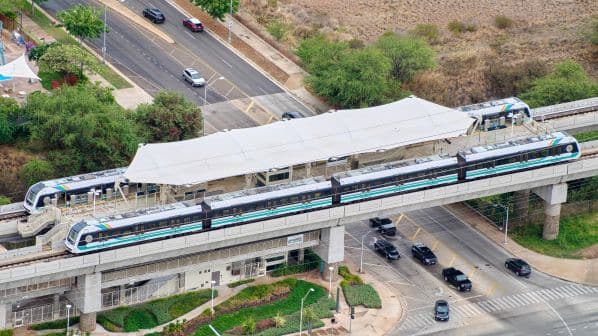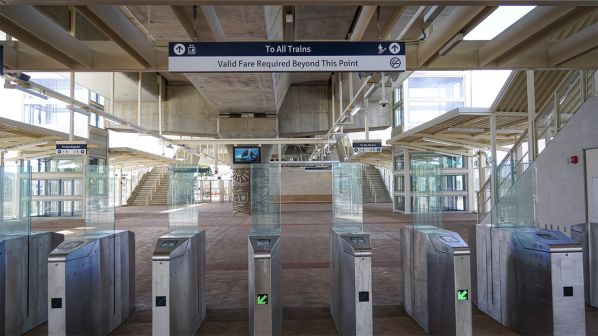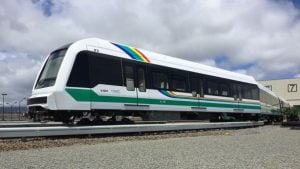PASSENGER services have begun on the delayed Honolulu Metro, the first fully-automated urban railway system to operate at Grade of Automation 4 (GoA4) in the United States.
The first phase of the elevated line runs for nearly 17.7km from East Kapolei to Aloha Stadium with nine stations. The second phase, which is expected to be operational in about two years, adds an additional 8.3km and four stations from Aloha Stadium to Middle Street-Kalihi Transit Center.
The third phase will add 4.8km and six stations to a temporary terminus at the Civic Center station in Kakaako. An additional 1.6km of metro line and two stations that will run to Ala Moana Transit Center will be completed in a later phase.
Honolulu’s new metro is estimated to remove an estimated 40,000 car journeys per day from the city’s congested roads once fully complete.
The new line has been delivered on behalf of the Honolulu Authority for Rapid Transportation (Hart) and the city's Department of Transportation Services (DTS) and is the first new major metro system to launch in the US since 1993.
To commemorate this important milestone, a grand opening ceremony was held at Aloha Stadium station on June 30, with speeches from senator for Hawaii, Mr Brian Schatz, the governor of Hawaii, Mr Josh Green, mayor of Honolulu, Mr Rick Blangiardi, DTS director, Mr Roger Morton, and Hitachi’s executive vice-president of energy and mobility, Mr Alistair Dormer. After the opening speeches, guests then rode the inaugural train through the nine stations of the first phase.
In December 2011, Hart awarded a $US 1.33bn core systems contract to the Ansaldo Honolulu joint venture of Ansaldo STS and AnsaldoBreda. Both companies have since been acquired by Hitachi.
The contract covered design, construction, operation, and maintenance of the full 32km metro line with 21 stations.
A groundbreaking ceremony was held earlier in 2011. The first section of the line from East Kapolei to Aloha Stadium was expected to open in 2015; followed by the second stage from East Kapolei to Kalihi in 2017 and the final section to Ala Moana in 2019.
However, construction did not begin until 2014, and the project has faced funding issues with costs increasing from $US 5.16bn in 2012 to $US 9.9bn in 2020.
Hitachi Rail has since supplied 20 four-car trains for Honolulu’s new metro. Each 79.2m-long train has capacity for up to 800 passengers, with large open gangways between the cars to allow passengers to move freely. The trains are equipped with air-conditioning, Wi-Fi, and space for bicycles, surfboards, pushchairs and luggage.
The new fleet is also fully compliant with the Americans with Disabilities Act (ADA), with dedicated spaces for wheelchairs and allowing free autonomous movement for disabled passengers when getting on and off.
For detailed data on metro projects around the world, subscribe to IRJ Pro.



